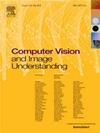课堂教师行为分析:TBU数据集与绩效评估
IF 4.3
3区 计算机科学
Q2 COMPUTER SCIENCE, ARTIFICIAL INTELLIGENCE
引用次数: 0
摘要
课堂视频是教学行为的客观记录,为教师的教学反思和评价提供依据。基于课堂视频对教师教学行为进行智能识别、跟踪和描述,了解教师的教学过程,已成为智能教育领域的研究热点。尽管最近的尝试为教学行为分析提出了几个有希望的方向,但由于缺乏多样化的课堂环境、细粒度的教学场景行为数据,现有的公共数据集仍然不足以满足这些潜在解决方案的需求。为了解决这个问题,我们分析了教师行为的影响因素和相关的视频数据集,并构建了一个名为TBU的教师行为理解的多样化、特定场景和多任务数据集。TBU包含37,026个优质教学行为片段,9422个带有精确时间边界标注的教学行为片段,6098个包含四个教育阶段细粒度行为、空间位置、交互对象多层次原子动作标签标注的教师教学行为描述片段。我们对TBU进行了全面的统计分析,总结了教师在不同教育阶段的行为特征。此外,我们系统地研究了TBU上三个视频理解任务的代表性方法:行为识别、行为检测和行为描述,为更全面地理解教学视频数据的研究提供了基准。考虑到课堂场景的特殊性和教学行为分析的需要,我们对现有的基线方法提出了新的要求。我们认为TBU可以促进课堂教师教学视频分析的深入研究。TBU可在:https://github.com/cai-KU/TBU。本文章由计算机程序翻译,如有差异,请以英文原文为准。
Classroom teacher behavior analysis: The TBU dataset and performance evaluation
Classroom videos are objective records of teaching behaviors, which provide evidence for teachers’ teaching reflection and evaluation. The intelligent identification, tracking and description of teacher teaching behavior based on classroom videos have become a research hotspot in the field of intelligent education to understand the teaching process of teachers. Although the recent attempts propose several promising directions for the analysis of teaching behavior, the existing public datasets are still insufficient to meet the need for these potential solutions due to lack of varied classroom environment, fine-grained teaching scene behavior data. To address this, we analyzed the influencing factors of teacher behavior and related video datasets, and constructed a diverse, scenario-specific, and multi-task dataset named TBU for Teacher Behavior Understanding. The TBU contains 37,026 high-quality teaching behavior clips, 9422 annotated teaching behavior clips with precise time boundaries, and 6098 teacher teaching behavior description clips annotated with multi-level atomic action labels of fine-grained behavior, spatial location, and interactive objects in four education stages. We performed a comprehensive statistical analysis of TBU and summarized the behavioral characteristics of teachers at different educational stages. Additionally, we systematically investigated representative methods for three video understanding tasks on TBU: behavior recognition, behavior detection, and behavior description, providing a benchmark for the research towards a more comprehensive understanding of teaching video data. Considering the specificity of classroom scenarios and the needs of teaching behavior analysis, we put forward new requirements for the existing baseline methods. We believe that TBU can facilitate in-depth research on classroom teacher teaching video analysis. TBU is available at: https://github.com/cai-KU/TBU.
求助全文
通过发布文献求助,成功后即可免费获取论文全文。
去求助
来源期刊

Computer Vision and Image Understanding
工程技术-工程:电子与电气
CiteScore
7.80
自引率
4.40%
发文量
112
审稿时长
79 days
期刊介绍:
The central focus of this journal is the computer analysis of pictorial information. Computer Vision and Image Understanding publishes papers covering all aspects of image analysis from the low-level, iconic processes of early vision to the high-level, symbolic processes of recognition and interpretation. A wide range of topics in the image understanding area is covered, including papers offering insights that differ from predominant views.
Research Areas Include:
• Theory
• Early vision
• Data structures and representations
• Shape
• Range
• Motion
• Matching and recognition
• Architecture and languages
• Vision systems
 求助内容:
求助内容: 应助结果提醒方式:
应助结果提醒方式:


